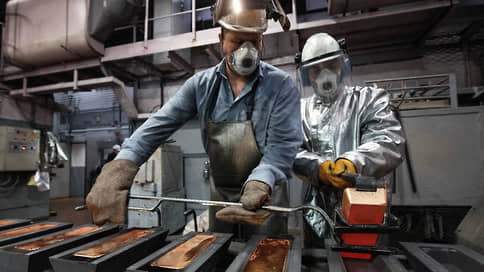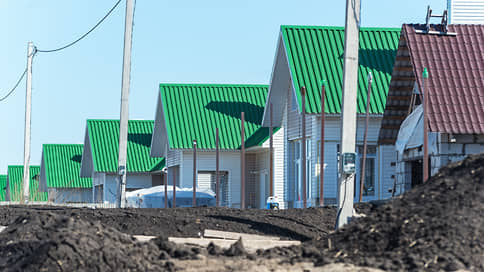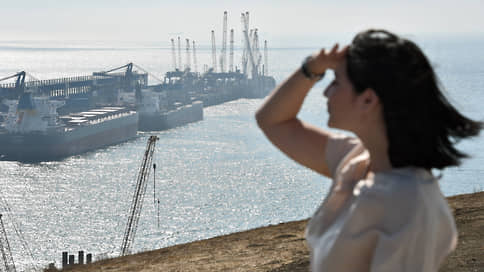Analysts revise the forecasts of metals in connection with a decrease in demand

Analysts revise long-term forecasts of the cost of industrial metals against the backdrop of a probable decline in consumption due to trade conflicts. So, in S&P Global reduced the expected price level for platinum, palladium, copper, zinc, nickel and aluminum by 2025–2029 by 0.3–1.7%, preserving the prognosis of the growth of quotations. Analysts see the most positive trends in the markets of copper, platinum and palladium.
S&P Global reduced the forecast level of prices for a number of industrial non-ferrous metals due to the expected reduction in demand in the conditions of trade restrictions caused by increasing US duties and the return actions of other countries, follows from the review of analysts.
So, for platinum, average predicted prices for 2025–2029 are reduced by 1.4%, for palladium – by 0.3%, for copper – by 0.4%, for zinc – by 1.3%, for nickel – by 0.5%, for aluminum – by 1.7%.
Analysts are still expected to grow quotations. According to the new S&P Global forecasts, in 2025 the cost of copper will be at the level of $ 9.45 thousand per ton, which is 2% higher than average prices for 2024. By 2029, quotes can reach almost $ 10 thousand per ton. Aluminum, according to S&P Global, in 2025 will be checked by 1.7% of the levels of 2024, to $ 2.55 thousand per ton, and will begin to rise in price from 2026. By 2029, almost 8%can add quotes. Nickel prices are expected to decrease by 10% of the year in 2025, to $ 16.4 thousand per ton, and will grow systematically from 2026. The cost of platinum in S&P Global in 2025 is predicted at $ 1.01 thousand per ounce, Palladium – $ 998.5 per ounce. By 2029, quotes can grow to $ 1.17 thousand and $ 1 thousand, respectively.
The S+ Consulting partner Pavel Karpus expects that copper prices in 2025 will remain high, primarily due to high demand from China, the growth of the electric car market and renewable energy sources. “It is difficult to predict the influence of non -market factors. Nevertheless, the tariff war will rather strengthen the position of copper, ”he says. In the aluminum market, an expert continues, a slight increase in prices is possible, due to demand in construction and packaging. Nickel prices, according to him, are positively affected by the growth in the production of batteries for electric vehicles, but the pressure can be increased by an increase in the supply from Indonesia.
The likelihood of raising copper prices is above, the head of the analytical department of the RIKOM-TRAST investment company Oleg Ablev agrees. He also expects that renewable sources of energy and electric cars can become demand drivers. In addition, the analyst notes, there is a high probability of increasing prices for aluminum: there may be restrictions on supplies from China if the country introduces export quotas in the light of the trade war with the United States.
Reducing prices, according to the expert, is possible for zinc and lead. The zinc has quite large reserves and weak demand from the China construction sector, and the lead quotes are affected by a decrease in demand for batteries in ordinary cars, explains Mr. Abelev.
Although the director of Ingosstrakh-Bank analytics Vasily Kutin notes that the world auto industry is gradually adapting to work in a tariff war, which can support platinum and palladium prices, which are also used in the production of catalysts in internal combustion engines. According to him, against the backdrop of stabilizing the situation on the car market and the increase in the cost of gold platinum and Palladium gold, in April 2025, they tried to overcome the level of $ 1 thousand per ton. Demand for industrial precious metals can also grow due to the accumulation of stocks against the background of persisting risks of escalating the tariff wars of China and the USA, the analyst adds. According to the Forecasts of the World Council for Investments in Platin, which is cited by Mr. Kutin, the demand for platinum this year will exceed a proposal by 539 thousand triple ounces.
Vladimir Potanin, head of Norilsk Nickel, in an interview RBC In December 2024:
“If you take the last two years, then the prices for our products have decreased significantly – by more than 40 percent … according to Nickel, according to Palladia.”
Norilsk Nickel in the reporting for 2024 reflected the neutral forecast for the Nickel market in the medium term, carefully optimistic – in the markets of copper and palladium, carefully positive – in the platinum market. According to the company, the Nickel market can support, among other things, the closure of a number of projects with a high cost of production, Palladium – a decrease in production in North America and South Africa, platinum – expansion of consumption outside the car industry, and copper – additional measures of economic support in China.






/s3/static.nrc.nl/wp-content/uploads/2025/05/19002605/ANP-527949917.jpg)